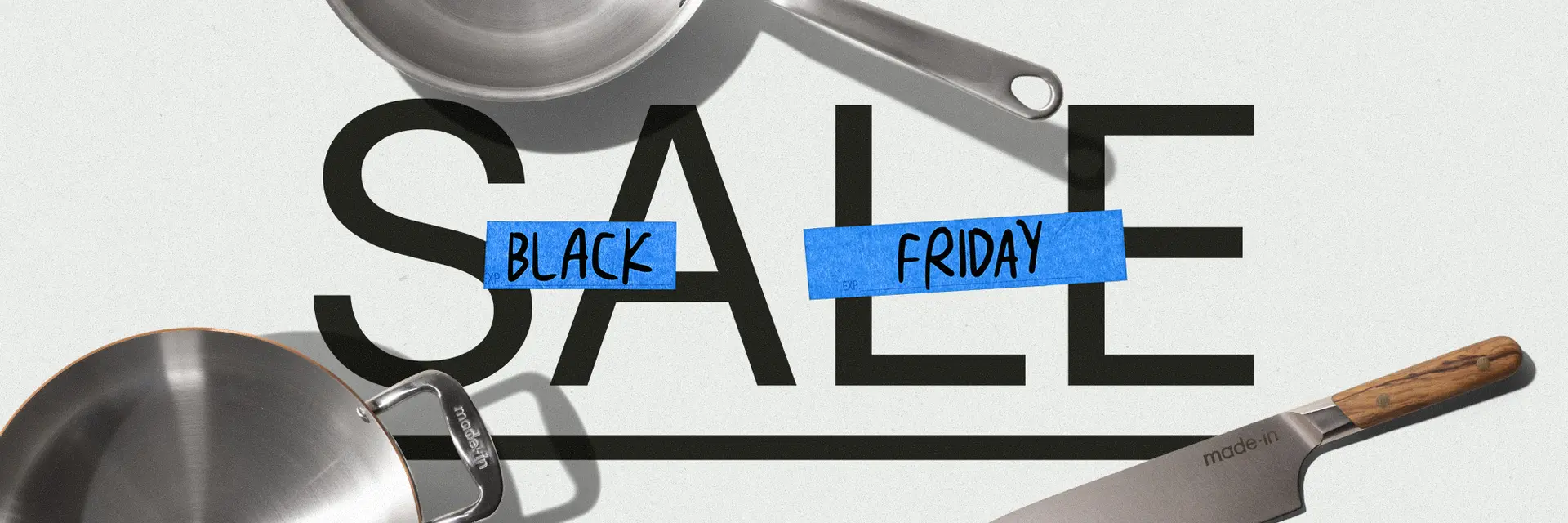Too often, cooked vegetables turn to mush. This happens more often than not with vegetables with high water content, like zucchini, eggplant, and squash. If you’ve ever cooked them, you know that they tend to steam instead of crisp. But they don’t have to. With a few tricks, it is easy to get these vegetables to have a crispy exterior while being soft and flavorful inside.
Chef Dennis Hong of Sereneco in New York City achieves this wonderful browning of vegetables thanks to his Stainless Clad Saute Pan. Its excellent heat retention means you can fry your vegetables without worry of the pan’s temperature dropping and the high walls protect any oil from splattering over the rim and onto your stove. And lastly, the large surface area of a Saute Pan means you can fit more vegetables without overcrowding the pan, meaning they will come out perfectly cooked.
Salt Your Vegetables Ahead of Time
“It’s very important to season in the very beginning, very heavily. That’s when the flavor becomes profound. The salt draws out any excess moisture that would get in the way of your vegetables crisping,” says Chef Hong. After adding salt, beads of water are released from the vegetables.
Before you cook them, make sure to dry them well with a paper towel. If you don’t they'll steam instead of crisp once they come in contact with the oil.
Get Your Oil Hot
The temperature of the oil is just as important as drying the vegetables when aiming for that golden brown exterior. If a vegetable meets oil that isn’t hot enough, it’ll soak up the oil, resulting in soggy vegetables. Chef Hong loves to impart flavor into this process by infusing his oil with garlic and thyme. Add enough oil so it covers the entire base of the Saute Pan.
Don’t Overcrowd The Pan
Overcrowding a pan, or adding too many vegetables at once is the most common mistake home cooks make. “What happens when you overcrowd a pan is that it creates this dome where the water from the vegetables cannot escape from the pan, so basically you’re steaming the vegetables, and the color will not be even,” says Chef Hong. A Saute Pan is perfect for this due to its large cooking surface area.
Working in batches with your vegetables is crucial. While it may take longer to work through all the vegetables in a single layer, patience will pay off, and you’ll be left with perfectly golden brown pieces.
Let Cool Properly
This step can make or break all the work you’ve put into cooking your vegetables. “If you were to transfer your vegetables to a plate, they would steam once they touch the plate. They need air, so we transfer them over to a tray with a bunch of paper towels. They help remove the oil, and then we top the vegetables with more paper towels to ensure all oil is removed,” says Chef Hong.
There are many ways to incorporate these vegetables into your meals. Chef Hong combines them with a marinara sauce and fresh basil to make Ratatouille. Tossing them with farro, Ricotta Salata, and fresh herbs would be another fantastic way to serve them.
Next time you’re cooking vegetables, don’t turn to the oven as a default. Instead, heat a Frying Pan, add some oil, and watch your vegetables attain that crispy exterior loaded with flavor.
























